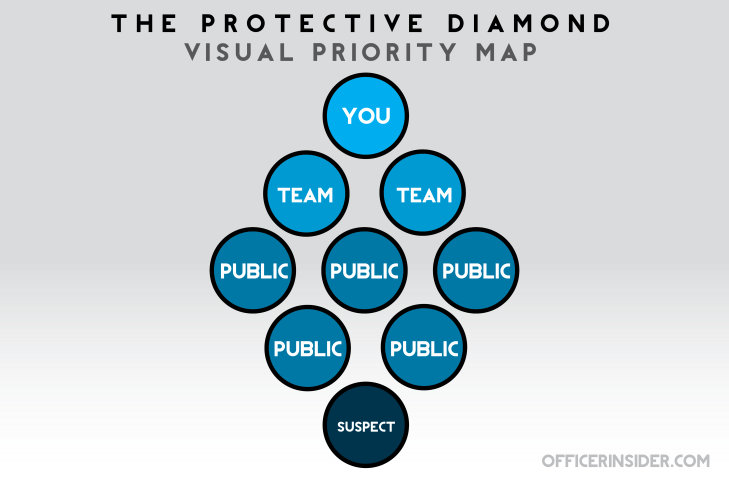In the course of your duties, you will often find yourself in a volatile situation where words need to be chosen carefully. One of these instances happens to involve your title and role as a security guard or private patrol officer.
The Incident
The incident above took place on November 15, 2013 at a highschool hockey game in Westchester, PA. During research for this article, I wasn’t able to determine if the subject of this video (identified as Aaron McLaughlin) faced any criminal charges for his actions, nor was I able to identify the event security worker and how bad his injuries, if any, were. Some of the less reliable sources I reviewed indicated that the worker may have been an off-duty deputy sheriff working security as a secondary job.
If you’ve been working in the security industry for any decent length of time, you’ll quickly find that the majority of the public has a general lack of respect for your role. You’ll often be mocked, degraded or treated with condescension. If this bothers you, then my advice is to find another line of work to go into– before you get fired, arrested, injured, sued or some combination thereof.
With this in mind, the main point I’d like to make in this article is a simple one:
Don’t use your title or role to establish authority.
It often has no desirable effect and will cause anything from feelings of resentment, increased resistance, and at worst, violent reactions.
The Breakdown
In this particular incident, it appears Mr. McLaughlin had been asked to leave for an undetermined reason. As the security worker is a representative or authorized person of the property (the ice rink where this took place), he is fully within his legal bounds to do so. By willfully defying this order, Mr. McLaughlin violated Philadelphia penal code §3503(b) that defines a Defiant Trespasser, a 1st degree misdemeanor punishable by up to 5 years in prison, although Mr. McLaughlin was under 18 during the time of incident (relevant sections highlighted in red):
§ 3503. Criminal trespass. (a) Buildings and occupied structures.-- (1) A person commits an offense if, knowing that he is not licensed or privileged to do so, he: (i) enters, gains entry by subterfuge or surreptitiously remains in any building or occupied structure or separately secured or occupied portion thereof; or (ii) breaks into any building or occupied structure or separately secured or occupied portion thereof. (2) An offense under paragraph (1)(i) is a felony of the third degree, and an offense under paragraph (1)(ii) is a felony of the second degree. (3) As used in this subsection: "Breaks into." To gain entry by force, breaking, intimidation, unauthorized opening of locks, or through an opening not designed for human access. (b) Defiant trespasser.-- (1) A person commits an offense if, knowing that he is not licensed or privileged to do so, he enters or remains in any place as to which notice against trespass is given by: (i) actual communication to the actor; (ii) posting in a manner prescribed by law or reasonably likely to come to the attention of intruders; (iii) fencing or other enclosure manifestly designed to exclude intruders; (iv) notices posted in a manner prescribed by law or reasonably likely to come to the person's attention at each entrance of school grounds that visitors are prohibited without authorization from a designated school, center or program official; or (v) an actual communication to the actor to leave school grounds as communicated by a school, center or program official, employee or agent or a law enforcement officer. (2) Except as provided in paragraph (1)(v), an offense under this subsection constitutes a misdemeanor of the third degree if the offender defies an order to leave personally communicated to him by the owner of the premises or other authorized person. An offense under paragraph (1)(v) constitutes a misdemeanor of the first degree. Otherwise it is a summary offense.
Note that in the video, it takes actual physical contact from a second security worker to Mr. McLaughlin’s right arm to actually cause him to begin leaving. At that point, he turns and asks the first security worker “Who are you? Who are you?”
From my perspective, my thought would’ve been “Does it matter who I am? Who cares? He’s doing what I’m telling him.” In this case however, the security worker responds with “I’m security, move.”
“I’m security, move.”
During any typical incident, there will be an initial struggle for control between the subject and you. Your job is to react to resistance, not encourage it, and there are many ways a subject might test your control, starting with words and escalating from there.
The faster you can establish and maintain dominance through language and presence, the safer and better things will turn out.
In this case, that’s what Mr. McLaughlin likely wanted– a response that he could use to regain some semblance of control with. From his perspective, it makes sense– he’s outnumbered 2 to 1, he no longer can keep doing whatever he wants, and he has to leave when he doesn’t want to. It’s pretty obvious the people in front of him are some sort of security personnel so by testing to see if he can get a response he wants, he feels like he regains control through cause and effect on a small scale.
The security worker’s response emboldened Mr. McLaughlin, at which point he mocks him and then turns around and something new happens: he shoves the security worker, stops leaving– and holds onto the security worker (assault). That’s another moment of escalation.
Up until that point, Mr. McLaughlin’s actions had pushed the envelope– throwing hands up, pushing the security workers– all signs of potential aggressive resistance, so it’s important to maintain somewhat of a safe distance from a subject when those signs are observed. Since this isn’t possible, the security workers simply maintained neutral contact with Mr. McLaughlin’s arms as much as possible– using minimal force to overcome resistance.
The security worker attempts to redirect Mr. McLaughlin’s arm, which is tough in such tight quarters, fails, and attempts a full-on take down right afterward. The end result is not pretty.
There were several mistakes the security worker made prior to the fight. Here they are (along with better alternatives):
- Answering a bait question with a predictable response: Always answer questions as neutrally as possible. You don’t want your answers to embolden a subject. If at all, you don’t even have to answer. But if I had to answer those questions, I might say any of the following:
- “I’m just a guy at work.”
- “An employee.”
- “I’m Spencer.”
- Giving unnecessarily authoritative commands: In this case, there was no need to follow up with “move,” like the security worker did after identifying himself.
- The subject already knows he has to leave, he’s not going to be able to go back to where he was standing, what other choice does he have than to leave?
- It’s possible that structuring a command into a request may have worked better, such as “Please continue down the steps.”
- Physical contact with zero advantage: The security worker was on a narrow step, in tight quarters, and his backup was stuck in the crowd behind him. If a take down was needed (it may very will have been, I don’t know if a come-along hold would’ve worked too well since the subject in this case was too low to gain leverage), some precautionary measures I would’ve taken are:
- Wait for my backup to get closer/take a position of advantage.
- Direct my backup to the rear of the subject.
- Ask nearby persons to clear away as much as possible.
Conclusion
As I continue to develop this site, I hope to make these breakdowns a regular on-going series. I hope you found this article helpful, and if you did, please take a moment to leave your thoughts below, or shoot me an email. Until next time, stay safe!



